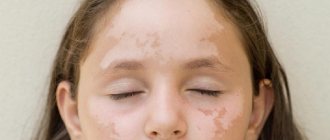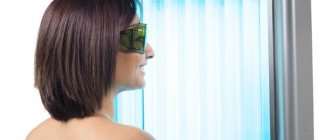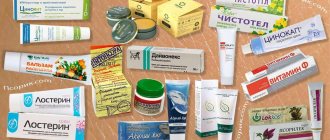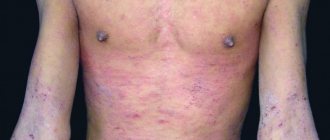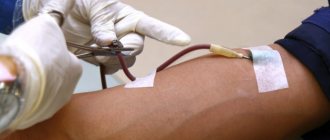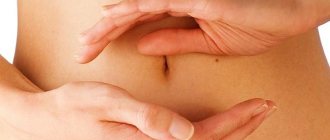Under the influence of various adverse factors, some people are diagnosed with palmoplantar psoriasis (PPP). This disease is very insidious because it creates not only psychological and physical discomfort, but also provokes the development of complications. Most often, the pathology is diagnosed in those patients who have previously been diagnosed with an autoimmune disorder, since it causes accelerated division of epidermal cells.
Palmoplantar psoriasis. Causes
It is believed that the trigger for the onset of the disease is disturbances in the functioning of the immune system. However, the mechanism is not thoroughly known.
In addition to problems with immunity, pathology can be triggered by the following factors:
- hereditary predisposition;
- constant mechanical irritation of the skin on the feet and palms;
- frequent skin contact with aggressive chemical elements;
- poor quality and uncomfortable shoes;
- endocrine and hormonal disorders;
- metabolic problems;
- advanced or past infectious diseases;
- prolonged skin contact with water;
- presence of allergies;
- gastrointestinal pathologies;
- severe or prolonged stress;
- a course of medications containing arsenic;
- long-term use of oral contraceptives;
- addiction to cigarettes and alcohol.
Most often, this type of psoriasis affects people from 20 to 60 years old. Palmar psoriasis is more common in patients under 35 years of age. Plantar - after.
Find out more
Reasons for development
Experts have proven that palmar psoriasis is not age-related, but most often the disease affects patients between 14 and 35 years old. Pathology has a connection with ethnicity. Thus, people of Caucasian nationality significantly increase the risk of developing pathology after reaching 50 years of age.
The exact causes of the development of the disease have not yet been fully studied, but the basis is always an autoimmune process. If a person monitors his health, then his body is protected from a variety of foreign agents - allergens, viruses, protozoan microorganisms.
With psoriasis, there is a specific malfunction in the body, after which the immune system begins to produce aggressive substances against its own tissues and cells.
If a patient has an excess number of T-lymphocytes and macrophages, then it will be simply impossible to avoid the development of an inflammatory reaction. Against this background, the manifestation of characteristic symptoms and hyperkeratosis is observed.
Laboratory studies have shown that the disease always has a small hereditary factor. For example, about 15% of the total population of the planet has genes that are associated with psoriasis, but only 2% of them have activation of the pathology. Such data indicate that there are more serious causes of the development of the disease:
- frequent smoking and drug abuse;
- prolonged stress and emotional lability (sensitivity);
- the presence of infections, frequent injury to the skin on the palms and arms;
- background pathologies that negatively affect the immune system.
Experts conducted additional studies that showed that there are a number of additional factors that influence the pathology, but are not its provocateurs. The following reasons fall into this category:
- exposure to various allergens on the skin;
- sunburn;
- general bacterial infections (sore throat, pneumonia);
- insect bites;
- severe form of alcohol intoxication;
- viral diseases (HIV infection);
- excess body weight;
- the presence of inflammatory processes (nasopharyngitis, bronchitis).
Stages of palmoplantar psoriasis
The disease has three main stages:
- Progressive or initial. The rashes are just starting to appear. At first - in a small amount, which gradually increases. Sometimes they can combine into larger entities. The patient is bothered by intense itching. You can see a photo of the initial stage of psoriasis on the palms.
- Stabilization stage. The rash stops developing, but does not disappear. The itching becomes less intense. The bright shade of the formations is replaced by a paler one.
- The final stage. The itching completely disappears. The volume of rashes decreases. Therapy becomes supportive or stops altogether.
Psoriasis of the palms has the same stages of development as that of the soles. With each relapse, all three stages are repeated.
Symptoms and signs of the disease
Barber's psoriasis, like other types of this disease, is a chronic disease. The course of the disease can be progressive without remission or passive, with long periods of rest. This type of psoriasis does not pose a danger to the patient’s life.
This species is characterized by local lesions of the skin. As a rule, in addition to papules, blisters also appear on the surface of the skin. Lesions are usually localized to the palms, feet, legs, forearms and soles.
The following symptoms may indicate the development of pustular psoriasis:
- the appearance of pustules. These are blisters that appear in the affected area of the skin. There is a clear liquid inside the pustules. If secondary infection of the wound occurs, pus may appear;
- inflamed skin. The surface of the skin located near the pustules has a pronounced inflamed appearance. It is red and compacted, hot to the touch and peels off easily;
- lesions are located strictly in certain areas.
In addition to the symptoms listed above, the patient may also experience a general deterioration in health. He may experience a feeling of general weakness. An increase in temperature is also possible.
Types of palmoplantar psoriasis
There are usually four types of this form of psoriasis:
- Circular shape. The formations have a round shape and a flaky surface. This psoriasis occurs on the palms and occasionally on the back of the hand. It is very rare for both feet and palms to suffer at the same time. In the first stages of the disease, the patient is bothered by severe itching, inflammation, swelling and tightness of the skin. Later, the epidermis begins to peel off and flake off in large areas.
- Calloused form. As the disease progresses, the skin becomes rougher, thicker and covered with calluses. This process is called hyperkeratotic roughening. Calluses are arranged randomly and can merge into larger formations. If the disease is ignored, the formations spread to nearby areas - to the back of the hands or feet. More often it manifests itself as plantar psoriasis, photos of which clearly demonstrate the situation.
- Plaque-fan-shaped type. The most common variety. Symptoms are similar to classic psoriasis: reddish papules with silvery scales. The rashes have a fan-shaped arrangement. In the absence of treatment, the rash becomes covered with cracks and begins to bleed.
- Pustular type. First, the skin turns red, and then pustular formations appear on it. After some time, they acquire a brown or yellowish tint and become crusty. The formations can increase in size and merge with each other. Often their arrangement is symmetrical. More often it manifests itself as psoriasis on the palms of the hands, a photo of which can be found on the Internet.
In all four cases, complications are possible.
Diagnostics
If you suspect plantar psoriasis of the feet, you should contact a dermatologist, who should prescribe the appropriate examinations.
First, a medical professional will conduct a visual examination of papulo-pustular acne. An experienced dermatologist can judge a possible lesion only on the basis of it and the collected anamnesis.
For a more thorough examination of the skin, the doctor uses a dermatoscope - a special device that allows you to magnify the image tens of times, and find out what foot psoriasis looks like in this form.
If palmoplantar pustulosis is suspected, the diagnostic standard requires laboratory tests:
- general blood analysis;
- blood chemistry;
- Analysis of urine;
- coagulogram.
Symptoms of palmoplantar psoriasis
Regardless of the form, this type of psoriasis has common symptoms:
- small rash with formations with a diameter of 1.5 mm, which later transform into plaques;
- merging of plaques into denser formations with clear boundaries (especially in the absence of treatment);
- red tint of rashes;
- swelling of areas with a rash;
- formation of cracks in the skin;
- intense itching and burning sensation.
With the pustular type or Barber psoriasis, pustules with purulent contents form instead of plaques. As the disease progresses, they become crusty. You can see a photo of psoriasis on the palms.
A similar rash often forms on the arch of the foot and on the big toes.
Main symptoms
Experts count five types of psoriasis of the palms and soles. In 95% of all cases, a characteristic visual clinical picture is observed. During the acute stage, psoriatic plaques appear on the patient’s extremities - scaly red spots on thickened skin. Such rashes are prone to peeling.
In inflammatory foci, the patient feels increased body temperature, itching and pain of varying intensity. If treatment is not started in a timely manner, the situation may worsen to the point of cracking of the skin, which will bleed. Psoriasis can negatively affect the condition of the nails:
- change their natural form;
- lead to the formation of various defects;
- the nail may become discolored and thicken.
BLI can make it difficult for a person to move normally, as well as wear shoes. Even minor damage to the skin on the hands interferes with the usual work. The disease can leave a negative imprint on relationships with people. Some patients are faced with the development of various complexes, which is why they try to avoid communication with others.
Treatment of palmoplantar psoriasis
You need to start treatment as early as possible. Then the disease will be easier, and the likelihood of relapse will be reduced. It is worth keeping in mind that psoriasis develops rapidly.
For palmoplantar psoriasis, treatment aims to prevent the growth of pathogenic cells, as reviews emphasize, this is achieved through complex measures:
- Local medicines. Applying gels, creams and ointments to the affected areas. They relieve symptoms, stop the inflammatory process and have an antibacterial effect. Moisturizers are often attributed.
- Systemic drugs. Their key purpose is to reduce inflammation and reduce the degree of immune response. Most often they come in tablet form. In advanced cases, I can prescribe injections. Advanced cases of palmoplantar psoriasis are demonstrated very well in photographs.
- Physiotherapy. Patients are prescribed phototherapy, laser treatment, and photochemotherapy. Procedures can be carried out as part of treatment in a sanatorium.
- Diet. The diet is hypoallergenic. Potential provoking foods and unhealthy foods are excluded from the menu: fried and smoked, canned, sweet, baked goods, alcohol. You should also give up smoking. It is better for a doctor to create an individual diet.
Typically, psoriasis is treated by a dermatologist. Less often - a simple therapist. If the disease is complicated by joint damage, a rheumatologist will be involved in the therapy.
Treatment of palmoplantar psoriasis with folk remedies
For rashes on the palms or plantar psoriasis, the main treatment can be supplemented with folk remedies.
Here are some of the recipes:
- Take the white of one egg and mix it with 15 ml of birch tar. Add 1 gram of boric acid, 1 tsp. natural honey, as well as 5 ml of Vaseline and fish oil. The resulting mass is used to cover the areas with the rash. Repeat every 12 hours.
- Take clover flowers and fill a stamp bag with them. Dip the bag into boiling water and keep it there for 1 minute. Take it out and let it cool. Apply to the affected areas.
- Chamomile flowers, burdock, calendula, horsetail and yarrow are taken in equal parts and mixed. 3 tablespoons of a mixture of these herbs are poured into a liter of boiling water and allowed to brew for 30-40 minutes. Make 20-minute baths from the infusion.
- Valerian root, St. John's wort, chamomile, string and celandine are taken in identical proportions. Pour boiling water over everything and leave for 3 to 4 hours. The infusion is taken orally twice a day before meals - 90 ml at a time. Course duration is 14 days.
Before resorting to any of the traditional recipes, be sure to consult with your doctor. Otherwise, side effects may occur.
Treatment of palmoplantar psoriasis with medications
The following types of medications are prescribed:
- Soothing and moisturizing ointments. As well as creams and gels. Designed to relieve symptoms and relieve inflammation. They are the main focus of therapy, especially in the first stages. For psoriasis on the palms of the hands, treatment may be limited only to these remedies.
- Antibacterial ointments. Used as a supplement. Prevents infection of the body through skin lesions.
- Antihistamines. May take the form of tablets, injections or external agents. They weaken the body's immune response to irritants and stop the inflammatory process.
- Corticosteroids. In the form of ointments or tablets. Prescribed in advanced cases - due to the abundance of side effects. More often - in the treatment of plantar psoriasis, forums on the topic are confirmation of this.
- Vitamin complexes. Especially based on vitamins A and D. Needed to support the body.
Some external products can cause irritation and thinning of the skin. This is a normal reaction.
All specific medications must be prescribed by a doctor.
Is psoriasis contagious?
Stains and wounds on the arms and legs look unattractive and repulsive. This causes some fears and concerns among others. Patients often feel awkward in the company of other people. Some are forced to wear gloves at all times so as not to scare others. We all need to be clear that psoriasis is not contagious. This is a non-infectious disease and cannot be acquired from another person.
You can safely shake his hand and make contact without worrying about your health. At the same time, you must be sure that this person is a carrier of psoriasis and not another skin disease.
Palmoplantar psoriasis is a common form of the disease, causing a lot of inconvenience and problems in the acute period, but responds well to symptomatic treatment. Manifestations of the disease disappear quickly and for a long time if you follow the advice of a specialist.
Prevention
Basic preventive measures:
- Daily baths. Or every other day. Duration - up to 20 minutes. Add essential oils, sea salt or a little baby soap without additives or fragrances to the water.
- Skin moisturizing. Using special creams. Once or twice a day, especially after taking a bath.
- Taking care of your skin. Do not use hard sponges or towels. After water procedures, the skin is not rubbed, but “blotted”. Any mechanical irritation should also be excluded.
- Sufficient amount of sun. To determine the optimal amount of sunlight required, you need to consult a doctor. Its deficiency will not give the desired result, and its excess will increase the risk of skin cancer.
- The right way of life. First of all, you should give up smoking and alcohol. It is important to monitor your diet, which should be based on vegetables. It is advisable to get at least 3 grams of omega-3 fatty acids from food. It is recommended to consume sea fish, walnuts or flax oil more often. This will reduce the degree of inflammation.
- No stress. Or their maximum limitation.
Compliance with precautions and timely treatment is a guarantee of better health.
